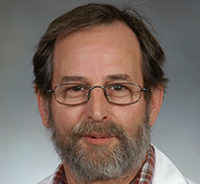
Introduction by Dr. William Chamberlin

Several years ago, Dr. Roderick Chiodini was asked to write a chapter for a book detailing his experiences. Dr. Chiodini is the microbiologist that originally cultured MAP from a 12 year old girl with Crohn’s Disease. He went on to found the International Association of Paratuberculosis and was the leading figure during the 1980’s and 1990’s.
The book was never published. The following draft is his story. As with all histories, others may have differing interpretations of events.
In his book The Structure of Scientific Revolution, Thomas Kuhn describes the process of introducing revolutionary new ideas into the scientific community and coined the term ‘paradigm change’ to describe this process. Kuhn describes group sociology and explains how experts of current dogma resist new ideas that threaten their ‘world view’ often with a zeal that abandons scientific objectivity. Dr. Chiodini’s experiences seem to closely follow the script that Kuhn outlines in his book.
We believe that this unfinished short historical offering helps explain much of the current controversy surrounding the acceptance of MAP as a human pathogen. It should be noted that Dr. Chiodini describes events that occurred 25 to 30 years ago. At that time the main argument against MAP was that it did not infect humans. The prevailing hypothesis at that time was that Crohn’s disease was an autoimmune disease. Both assumptions have now been abandoned. Advances in methods and technology since then have now clearly demonstrated that MAP does indeed infect humans and is associated with Crohn’s Disease. Proving that MAP causes Crohn’s Disease is more difficult. Those with experience in such matters argue that MAP as a causal agent of human disease will not be accepted until a truly effective therapy is found and diagnostic techniques are developed that can accurately correlate improved clinical outcomes with a bacterial response.
Thankfully we may be closer than most realize.
[gview file=”https://humanpara.org/wp-content/uploads/2018/07/Chiodini-Chapter.pdf”]
